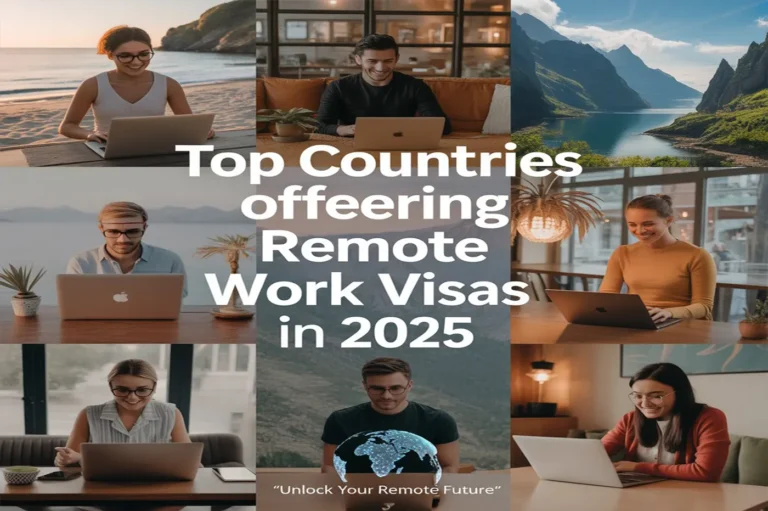When we talk about visa sponsorship, we are referring to a Canadian employer being willing to go through the paperwork and government process to legally hire a foreign worker.
That’s not always easy for employers. There’s a cost involved, strict rules to follow, and they often have to prove that no Canadian citizen or permanent resident was available to fill the role first.
Because of that, not every company wants to sponsor foreign workers.
But here’s the good news: many do. Especially in industries where there’s a talent shortage, like tech, healthcare, construction, and agriculture.
Understanding Canada’s Work Visa Landscape
Before diving into job search strategies, it’s crucial to understand the different types of work permits and visa sponsorship options available in Canada.
Types of Work Permits
- Temporary Foreign Worker Program (TFWP)
- Purpose: Allows Canadian employers to hire foreign workers when no Canadian workers are available
- Requirements: Employer must obtain a Labour Market Impact Assessment (LMIA)
- Duration: Typically 1-4 years depending on skill level
- Best for: Workers in high-demand occupations
- International Mobility Program (IMP)
- Purpose: Allows foreign workers to work in Canada without an LMIA
- Categories: Includes CETA, CUSMA, intra-company transfers, and reciprocal employment
- Requirements: Varies by category
- Best for: Workers from specific countries or in specialized roles
- Global Talent Stream (GTS)
- Purpose: Fast-track work permits for high-skilled workers
- Processing time: 2 weeks for work permit
- Requirements: Job offer from designated employer in eligible occupation
- Best for: Tech workers, engineers, and other in-demand professionals
Understanding Visa Sponsorship in Canada
Visa sponsorship means a Canadian employer helps you get legal permission to work in the country. The employer applies for a Labour Market Impact Assessment (LMIA) on your behalf.
An LMIA proves that hiring you won’t negatively impact Canadian workers. It shows that no qualified Canadian citizen or permanent resident is available for the position.
Not all jobs require an LMIA. Some positions are LMIA-exempt under international trade agreements or specific programs. These include jobs under NAFTA, intra-company transfers, and certain academic positions.
The process takes time and costs money for employers. This is why you need to present yourself as an exceptional candidate worth the investment.
Industries That Commonly Sponsor Foreign Workers
Some sectors have higher demand for international talent and are more likely to sponsor visas.
Technology and IT Software developers, data scientists, and cybersecurity experts are in high demand. Canadian tech companies often sponsor foreign workers because the local talent pool is limited.
Healthcare Nurses, doctors, and allied health professionals find good sponsorship opportunities. Canada faces healthcare worker shortages, especially in rural areas.
Engineering Civil, mechanical, and software engineers have strong prospects. Major infrastructure projects create ongoing demand for engineering talent.
Skilled Trades Electricians, plumbers, welders, and carpenters are needed across the country. These roles often qualify for expedited processing.
Natural Resources Mining, oil and gas, and forestry companies frequently sponsor foreign workers. These industries require specialized skills that may not be available locally.
Agriculture and Food Processing Seasonal and permanent positions in farming and food production regularly sponsor international workers.
Where to Search for Sponsored Positions
Job Bank Canada This government-run website is your best starting point. It clearly indicates which positions are open to foreign workers. Use the advanced search filters to find LMIA-supported jobs. Visit: Job Bank Canada
Here are a other well-known job search websites for such purpose:
Crafting Your Application for Canadian Employers
Your resume needs to speak Canadian. This means adapting your format, language, and content for the local market.
Resume Format Use a clean, professional layout. Include your contact information, professional summary, work experience, education, and skills. Keep it to two pages maximum.
Canadian employers expect specific details about your achievements. Use numbers and metrics wherever possible. Instead of saying you “improved sales,” write “increased sales by 23% over six months.”
Cover Letter Strategy Address visa sponsorship directly but positively. Mention your legal status upfront and express your serious commitment to relocating to Canada.
Show that you understand Canadian workplace culture and values. Research the company thoroughly and demonstrate genuine interest in their mission.
Educational Credential Assessment Get your foreign education evaluated through a recognized credential assessment service. This shows employers that your qualifications meet Canadian standards.
Many employers require this assessment before considering international candidates. Complete it early in your job search process.
Building Your Canadian Network
Networking opens doors that online applications cannot. Canadians value personal connections and referrals carry significant weight.
Professional Associations Join Canadian professional associations in your field. Many offer networking events, job boards, and mentorship programs specifically for newcomers.
LinkedIn Networking Connect with professionals in your target companies and cities. Engage with their content and share valuable insights from your experience.
Virtual Events and Conferences Attend Canadian industry conferences online. Participate in discussions and follow up with new connections afterward.
Alumni Networks If you studied at a university with Canadian connections, leverage those relationships. Alumni often help fellow graduates find opportunities.
Informational Interviews Reach out to Canadian professionals for brief conversations about their industry. These calls often lead to job referrals and insider knowledge about hiring practices.
Understanding the Application Process Timeline
The visa sponsorship process has multiple steps and can take several months. Understanding the timeline helps you plan effectively.
Phase One: Job Search and Offer This phase typically takes 2-6 months depending on your field and approach. Having a strong network and targeted applications speeds up the process.
Phase Two: LMIA Application Your employer submits the LMIA application to Employment and Social Development Canada. This process takes 1-4 months depending on the occupation and location.
Phase Three: Work Permit Application Once the LMIA is approved, you apply for your work permit. Processing times vary by country but typically range from 2-12 weeks.
Plan your timeline accordingly. If you want to start working in Canada by a specific date, begin your job search at least 8-12 months earlier.
Preparing for Canadian Workplace Culture
Understanding Canadian workplace expectations helps you succeed in interviews and on the job.
Communication Style Canadians value direct but polite communication. They appreciate honesty and expect you to speak up when you have questions or concerns.
Work-Life Balance Most Canadian employers respect personal time and vacation days. This balance is often better than what international workers experience in their home countries.
Diversity and Inclusion Canadian workplaces actively promote diversity. Your international background is seen as an asset, not a barrier.
Professional Development Employers often invest in employee training and career advancement. Express your interest in growing with the company during interviews.
Common Mistakes to Avoid
Applying for Jobs Without Checking Eligibility: Not all positions are open to foreign workers. Read job postings carefully and only apply to roles that explicitly welcome international candidates.
Generic Applications: Sending the same resume and cover letter to every employer reduces your chances. Customize each application to match the specific job and company.
Ignoring Provincial Requirements: Each province has different licensing requirements for regulated professions. Research these requirements early and begin the qualification process.
Underestimating Processing Times: Visa applications take longer than expected. Have realistic timelines and maintain patience throughout the process.
Not Following Up: Canadian employers appreciate professional follow-up. Send thank-you emails after interviews and check in periodically on your application status.
Maximizing Your Success Rate
Language Proficiency Strong English or French skills are essential. Consider taking language tests like IELTS or TEF to prove your proficiency level.
Relevant Canadian Experience If possible, gain some Canadian experience through internships, volunteer work, or remote positions. This shows employers your commitment and cultural fit.
Professional References Secure strong references from previous employers who can speak to your skills and work ethic. Brief them on Canadian workplace expectations.
Salary Research Understand Canadian salary ranges for your position and location. Use sites like PayScale or Glassdoor to research appropriate compensation levels.
Flexibility on Location Smaller cities and rural areas often have more sponsorship opportunities and less competition. Consider expanding your geographic search.
Finding a sponsored job in Canada requires persistence, strategy, and patience. The country needs skilled foreign workers and offers excellent opportunities for career growth and quality of life.
Start your search early, tailor your applications carefully, and build meaningful professional relationships. With the right approach, you can successfully navigate the process and begin your Canadian career journey.
The key is positioning yourself as a valuable addition to the Canadian workforce. Show employers that sponsoring your visa is an investment in their company’s future success.




This article is so so helpful
Thanks very much dear team….
Need Lmia certificate
Work permit for a job
I should be very grateful if you could consider my application for the post of bakery job to facilitate this migration process
Need Lmia certificate and work permit